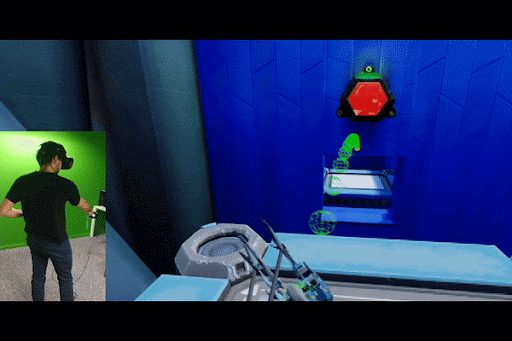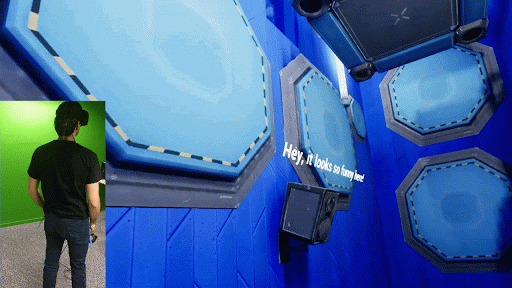top of page
Erwann Pottier

Warpshot
Genra: Virtual Reality Platform
Made on Unreal Engine 4 with the HTC Vive
You play a subject test who have to pass through multiples tests made by sadistic scientists. They gave you one tool: a slingshot, that teleports you. Use the Virtual Reality to immerse yourself into this strange lab.
My role in this project
During this project i had two roles that has one main goal: being the link between the Game Design and the coding, at the beginning of the project I had to work on the Game Design of the game. I had to write documents to specify how to code the mechanics of the game, how we would like the feedbacks and how to include the narration in it.
Design goals

Our main constraint was to make an "intuitive" VR game. That's we tried to think about how we could think on how we could make it more intuitive. And we sad that the main one was the way to move on VR games. We "teleport" ourselves, even in games which doesn't explain at all the reason why.

So we tried to create an intuitive, instinctive but also fun way to aim the teleportation's target. And that's why we imagined a slingshot which teleports you on where the rock arrives. The first playtests were conclusive on the fun given by this mechanic
But we though that only adding this mechanic wouldn't be enough. That's why we added two other kind of rocks. A glue one that keep the buttons actived and that cancels the boucing wall. And the wall put fire on the wooden walls, the crates and cancel the glue effect. The reason why we created those rocks were to make more complex puzzles and also to diversify the differents levels.
.png)
Adding those rocks were our main design problem for this game. But those errors will be detailled in the Post Mortem part.
My second role was to re adapt the levels. Meaning that the level designer did the first blocking of the level, to give a main idea of the level and the player's path. I had to readapt the metrics, seeking the level's problems. Which were linked to readapt for VR (an unusual 3C for us at this moment) or just problems linked with distances/difficulties/understanding. Then I put all the scripts given by the programmer (helped by him to understand them) to make work the level and put the assets in the level. And of course I had to readapt with my team considering the feedbacks that we received during playtests
.png)
.png)
An example of rework on the level 4. Upper is the blocking version and down is the final one
Post Mortem
As said before adding more rocks were our main design problems. It complexified the game where it didn't need to. And after several playtests we saw the problem but we tried (due to a lack of time) to fix the problem by adding more feedbacks. But adding feedbacks can't be relevant for VR because players are way more likely to miss them.

As said before it was our first game in VR, also our first game made in Unreal (with at least some ambition behind it) and lasst but not least we had to adapt from a new version-control software: Perforce. Meaning that we first had to go through a R&D part (mainly made by our programmer for UE4/VR and me for Perforce) which was needed to at least give a result. This first limited us for the time accordated for the project (10 weeks) but we succeeded to manage quite well the time, we didn't have much late during the project.
Therefore the rock's problem was still here and after we talked we saw what was the main problem: We wanted first a platform game, using player's ability. But then we though it would might be too few to make a relevant game leading us to create a puzzle game. But with the different playtests we saw that the main fun came from the platform part, even that the puzzle part was a drag on the gameflow.
We concluded that the project might need a huge rework focusing on a more action/platform part and our programmer is currently working on a concept for, maybe, our diploma project.
bottom of page